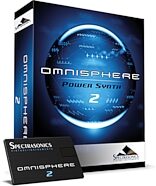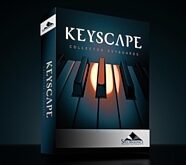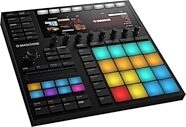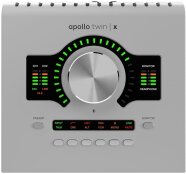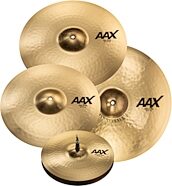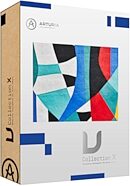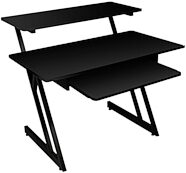FXpansion D-CAM Synth Squad Software Synthesizer Suite
No longer available at zZounds
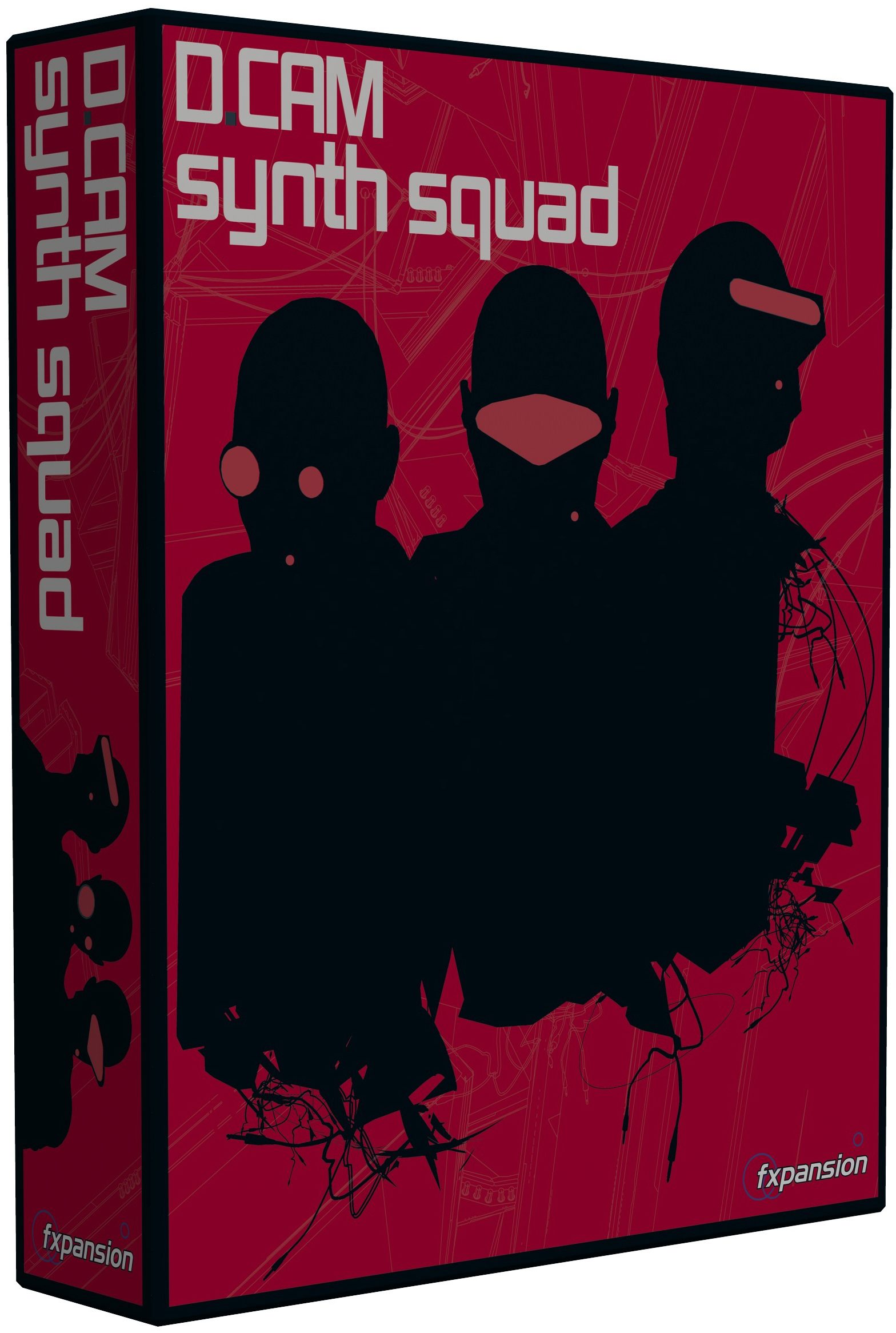
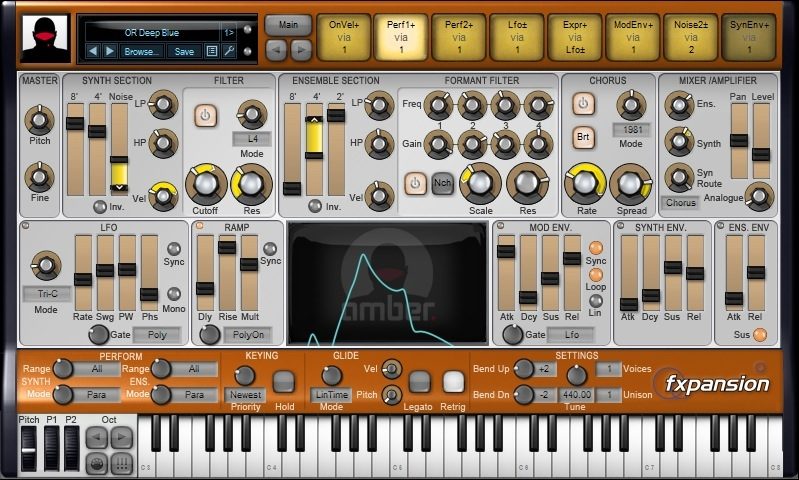
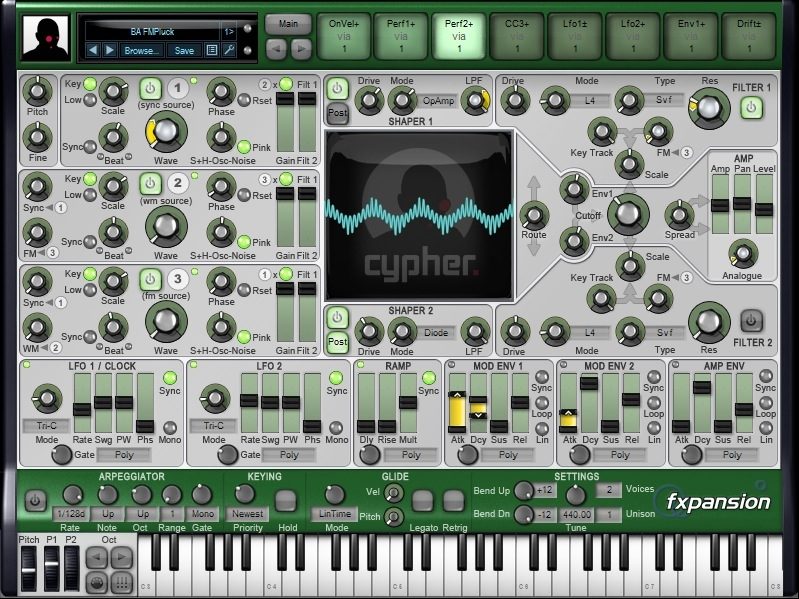




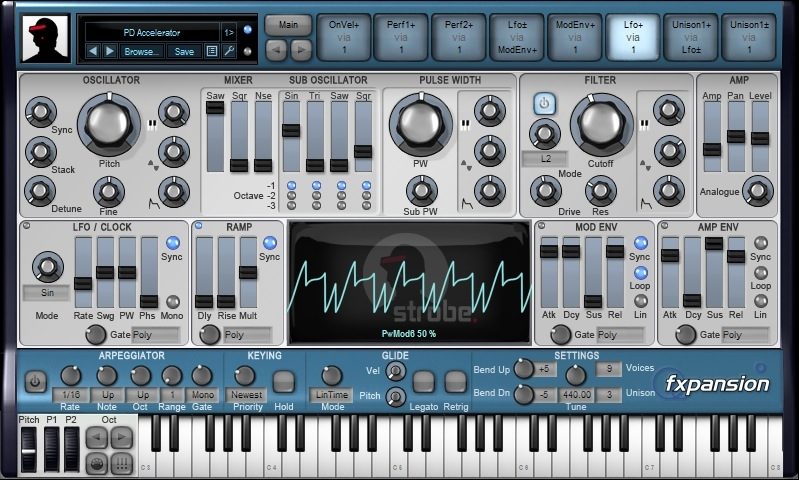
zZounds Gear Experts Say...
Meet the analog time-traveling machine. This software delivers three powerful synthesizers that combine old-school sounds with new-world digital possibilities.
Overview
Introducing an evolutionary leap in software synthesis technology. DCAM: Synth Squad finally delivers the satisfaction of playing real analogue instruments. Advanced modelling technology carefully reconstructs the soul of dusty vintage circuits within your computer, for the unmatched vibe of hardware at a fraction of the cost.
At the heart of DCAM: Synth Squad are 3 modelled synthesizers - Strobe, Amber and Cypher - bulging with the immense weight and power of old-school analogue. These are no mere emulations stunted by the limitations of the past. Instead, they combine the best features from legendary machines with new and exciting ideas to drag them kicking and screaming into the modern world.
Oscillators ooze immense sound pressure, amp stages can be overloaded for extra grit, and real-world chaos can be dialled into the circuit for delicious instability. These synths don't break with extreme settings, so you can abuse them just like the real thing. Meanwhile, the intuitive TransMod modulation system brings your sounds to life in new and expressive ways.
Fusor, a versatile sound-design environment that can layer and keysplit 3 instances of the DCAM synths, is also included. It provides a variety of ways to add new dimensions to your sounds with high-quality FX, extra modulation and an advanced step-sequencer/arpeggiator.
Purity of concept and execution. Meticulously engineered circuit models. Raw musical tone. The ultimate in sound quality and performance control.
Strobe's design philosophy is to get close to the immediacy and simplicity of classic performance synths like the Roland SH101 and SH-09, Oberheim OB-1 and Yamaha CS-10. Such synths are not overly endowed with complex controls - as a result it's difficult to make a bad sound with them and they beg to be played! Similarly, Strobe features a relatively simple architecture, allowing you to program great sounds quickly so that you can get on with making music with them!
Oscillator
While Strobe has a single oscillator, it's a very flexible and powerful oscillator. Saw, pulse and noise waveforms can be freely mixed alongside sine, triangle, saw and pulse sub-oscillators. You can set each sub-osc up to 3 octaves below the main waveforms, and adjust the pulse width of both the main and sub pulse waveforms. You can also sync the osc pitch to the lowest sub-osc. The osc-stacking feature lets you layer up to 5 copies of the osc and detune them to achieve thick multi-osc tones without using entire unison voices.
Filter and Amp sections
Strobe's filter is capable of delivering an extremely wide range of timbres, due to its plethora of filter curves and rich modelled drive circuit for extra-thick tone. Like the other instruments in DCAM: Synth Squad, the amp section can be overloaded, just like in a real analogue synth.
Arpeggiator and direct modulation
Strobe contains a built-in arpeggiator and a range of modulators with flexible gating options - you can gate envelopes with the LFO, for example. Direct modulation depth controls exist for varying the pitch, pulse width and filter cutoff from LFO, envelope and keytracking sources, allowing you to dial up classic subtractive sounds quickly and efficiently.
Transform your sounds with TransMod
Like the other DCAM synths, Strobe is equipped with the TransMod advanced modulation system, which allows you to modulate almost any parameter with an extensive range of modulation sources. Using the TransMod system takes Strobe's potential way beyond that offered by the direct modulation controls on the front panel. Apart from offering a huge range of modulation sources, you can also modulate controls based on active voices and unison voices. Using 2 unison voices and deploying unison modulation instantly turns Strobe into a dual-osc synth, with a filter and amp for each osc!
At the heart of Amber is a bank of oscillators that are frequency-divided to produce a full keyboard range of 96 notes within a single synth voice. This means that you can play 96 notes simultaneously. These notes, referred to as 'paraphonic notes', are then mixed down into a single signal to be fed through conventional polyphonic processing blocks (a single instance within each synth voice).
Synth and Ensemble sections
Amber features two sections which both feature very similar paraphonic sources, with the subsequent polyphonic processing blocks defining their final character. The Synth section is fed through a multimode resonant filter, which gives it a synth-like tone, while the Ensemble section goes through a formant filter and chorus, to impart the character of a string ensemble. The sections are mixed together at the final output of the voice, and there are several routing options for the Synth section which allow it to be fed through the Ensemble section's formant filter and/or chorus.
Playing responses
Both the Synth and Ensemble sections are capable of several playing responses. They can be set to 'paraphonic' mode (96 notes simultaneously with an envelope and VCA for each note - similar to the Logan String Melody and Korg Lambda), a couple of modes which can emulate synths with a single envelope/VCA for all paraphonic notes (such as the Eminent Solina and ARP Omni), and a fully monophonic mode, which dispenses with paraphonic response altogether.
Stack and modulate voices
Unlike vintage hardware string machines, Amber is capable of running with multiple voices and unison. This, combined with the DCAM TransMod system, offers a potential universe of new, unheard sounds!
The ethos behind Cypher is to provide a truly accurate model of a synth capable of analogue-style FM, audio-rate modulation and other interesting oscillator processes. With dual shaper/filter stages to drive and sculpt the raw oscillator output, and DCAM features like the TransMod modulation system, Cypher is a tweaker's utopia for producing timbres ranging from visceral mono and poly sounds to abstract textures and sound effects.
Advanced oscillators
Cypher's 3 oscillators feature continuously variable waveshapes, ring modulation, white/pink noise sources and beat-detuning (which keeps the rate of oscillator-beating the same across the whole keyboard). However, the real depth of the oscillators lies in the various ways that they can inter-modulate each other at audio rates. Osc3 can perform FM on Osc2, while Osc2 can modulate the waveshape of Osc3 at audio-rate frequencies. The oscs feature thru-zero FM behaviour and the ability to tune in precise harmonics, which allows musical digital-style FM sounds rendered with fat-sounding modeled analogue oscillators.
Innovative osc-sync and audio-rate sample-and-hold
The oscs also feature advanced sync capabilities - Oscs 2 and 3 sync to Osc1 to varying degrees, leading to a range of 'hard' and 'soft' osc-sync sounds. Another innovative feature is the audio-rate sample-and-hold, which quantizes the waveform of one osc with the frequency of another. The sound is reminiscent of lo-fi digital FM and sampling, but has a unique sound of its own.
Dual Filters and polyphonic waveshaping
The osc section is fed into two paths, each containing a filter and waveshaper, which can be routed in various ways. The waveshapers allow you to twist the osc shapes further with several flavours of gritty distortion. The filters are selectable from state-variable and transistor-ladder models, with rich drive and realistic filter FM.
Layering, keysplitting and adding FX
Fusor lets you layer and set up keyboard splits for 3 instances of the DCAM synths. You can add high-quality FX as inserts on each synth, as aux sends or on the master output. The built-in FX suite includes a licensed version of Overloud Breverb for high-quality reverb, as well as DCAM circuit-modelled compression, filtering, chorus and overdrive, not to mention an array of other creative processors for sculpting sounds into new shapes.
Animate your sounds!
Animator is Fusor's powerful integrated step-sequencer and arpeggiator device. Offering everything from programmable arpeggio patterns to complex real-time performance sequencing, Animator brings your synth sounds to life! Dial up inspiring riffs and hooks in minutes, lay down funky, swung drum machine lines or simply lose yourself in infinite sonic experimentation. Fusor also includes a set of extra LFOs and envelope followers to inject further dynamic aspects to your performances.
Complex modulation
Fusor's internal modulation system, called FuseMod, opens up semi-modular control possibilities for the various devices in Fusor. Synths can modulate FX parameters, extra LFOs, or Animator engines - for example, you can modulate a phaser or clock Animator from a synth LFO. You can even use the envelopes and LFOs from one Fusor-hosted synth to modulate another polyphonically to create monster semi-modular hybrids.
DCAM: Discrete Component Analogue Modeling
The philosophy behind DCAM is to model a circuit based on each individual component of the circuit and its structural context, rather than simply treating a circuit as a 'black box' and analyzing its overall output. The result is a genuinely realistic model of the circuit - its non-linearities, structure and behavior are preserved intact.
What this means to you is a set of modeled synthesizers with unprecedented vibrancy and realism. You can abuse parameters just like on a hardware analogue synth, and the model responds realistically. Oscs sync convincingly, amp stages can be overloaded, performing FM on an osc yields rich veins of otherworldly texture, not an ugly digital mess. You don't have to avoid certain settings any more because they sound bad!
Do not expect perfect, symmetrical waveforms with DCAM: Synth Squad... imperfect waveforms are the very essence of a real analogue VCO! Drive stages exist at several points in the signal path for organic grit and increased tonal variation. Meanwhile, complex non-linear filters massage the raw slabs of sound pressure from the oscillators into an infinite variety of timbres. The results are satisfying, musical sounds that inspire you to play music.
The aim of DCAM: Synth Squad is to provide software synthezisers with real substance... sound sources that sound right, so you aren't forced to bury them in endless plugin chains to make them interesting.
The 'Analogue' control
Each synth has an 'Analogue' control, which dials in a variable amount of real-world instability into the circuit. The effects of noise and mains hum are simulated, leading to an edgier sound at lower amounts, to wilder instability at higher settings.
Oversampling options
All the DCAM: Synth Squad plugins feature individual oversampling settings, both for realtime (normal use) and offline (non-realtime mixdowns and 'freeze') operation. The default setting for realtime use is 1x, allowing the highest polyphony on as many systems as possible. For higher-spec CPUs, try 2x oversampling for an even more realistic sound. Users with any CPU can use as high a value as required for offline oversampling, resulting in exceptional sound quality.
TransMod and FuseMod modulation systems
DCAM: Synth Squad introduces the TransMod system, which makes programming complex modulation more visually intuitive than a traditional 'mod matrix'. A spectacular range of modulation is possible - the mod source menus include active voice/unison-voice counts and versatile randomized values as well as standard sources like LFOs and envelopes. You can even harness beating rates between oscillators as LFOs in Cypher, or load entire presets as modulation depths for patch-morphing effects.
Fusor extends the TransMod concept with the FuseMod system, making DCAM synth modulators available to Fusor's internal FX and LFOs, as well as to the Animator step-sequencer/arpeggiator. Use synth envelopes and LFOs to clock step-sequencers and modulate reverbs and granular freezers, and play self-oscillating precision-modelled filters with keyboard sources.
In addition, the TransMod source menus for Fusor-hosted synths are expanded with modulation sources from other synths and devices in Fusor... so you can create a super-performance synth with 3 inter-modulating Strobe instances, or complex hybrid textures and soundscapes with Strobe, Cypher and Amber. The creative possibilities for sound design are limited only by your imagination!
Expressive performance control
All of the supplied presets offer expressive timbral variation through the use of modulation by keyboard velocity and two performance controllers (which you can map to aftertouch, mod-wheel, breath and other MIDI CCs). Our team of sound designers have strived to create dynamic presets full of energy and movement. If you've grown accustomed to flat, boring VA synth presets, prepare to be inspired by the possibilities that DCAM: Synth Squad presents.
The DCAM synths introduce a new type of glide alongside traditional pitch glide. Velocity glide smooths transitions to new notes' velocity modulation depths, creating rich expressive possibilities. Glide times can also be modulated - if you modulate them with voice/unison voice counts, you can have a different glide time for each voice. Independent functions for legato glides and envelope retriggering complete a set of features that allow incredibly flexible and varied playing responses.
DCAM: Synth Squad also includes a standardized MIDI learn system, and full support for host automation. There is even an integrated program change list, which lets you assign presets to MIDI program changes for live performance! read less
At the heart of DCAM: Synth Squad are 3 modelled synthesizers - Strobe, Amber and Cypher - bulging with the immense weight and power of old-school analogue. These are no mere emulations stunted by the limitations of the past. Instead, they combine the best features from legendary machines with new and exciting ideas to drag them kicking and screaming into the modern world.
Oscillators ooze immense sound pressure, amp stages can be overloaded for extra grit, and real-world chaos can be dialled into the circuit for delicious instability. These synths don't break with extreme settings, so you can abuse them just like the real thing. Meanwhile, the intuitive TransMod modulation system brings your sounds to life in new and expressive ways.
Fusor, a versatile sound-design environment that can layer and keysplit 3 instances of the DCAM synths, is also included. It provides a variety of ways to add new dimensions to your sounds with high-quality FX, extra modulation and an advanced step-sequencer/arpeggiator.
Purity of concept and execution. Meticulously engineered circuit models. Raw musical tone. The ultimate in sound quality and performance control.
Strobe - performance synth with a cutting modern edge
… read more Designed to be as easy to program and satisfying to play as an analogue monosynth, Strobe also adds polyphony, osc-stacking, a versatile multimode filter and deep modulation to create a modern classic. Strobe specializes in no-nonsense analogue-style leads, sick basses and complex pads.Strobe's design philosophy is to get close to the immediacy and simplicity of classic performance synths like the Roland SH101 and SH-09, Oberheim OB-1 and Yamaha CS-10. Such synths are not overly endowed with complex controls - as a result it's difficult to make a bad sound with them and they beg to be played! Similarly, Strobe features a relatively simple architecture, allowing you to program great sounds quickly so that you can get on with making music with them!
Oscillator
While Strobe has a single oscillator, it's a very flexible and powerful oscillator. Saw, pulse and noise waveforms can be freely mixed alongside sine, triangle, saw and pulse sub-oscillators. You can set each sub-osc up to 3 octaves below the main waveforms, and adjust the pulse width of both the main and sub pulse waveforms. You can also sync the osc pitch to the lowest sub-osc. The osc-stacking feature lets you layer up to 5 copies of the osc and detune them to achieve thick multi-osc tones without using entire unison voices.
Filter and Amp sections
Strobe's filter is capable of delivering an extremely wide range of timbres, due to its plethora of filter curves and rich modelled drive circuit for extra-thick tone. Like the other instruments in DCAM: Synth Squad, the amp section can be overloaded, just like in a real analogue synth.
Arpeggiator and direct modulation
Strobe contains a built-in arpeggiator and a range of modulators with flexible gating options - you can gate envelopes with the LFO, for example. Direct modulation depth controls exist for varying the pitch, pulse width and filter cutoff from LFO, envelope and keytracking sources, allowing you to dial up classic subtractive sounds quickly and efficiently.
Transform your sounds with TransMod
Like the other DCAM synths, Strobe is equipped with the TransMod advanced modulation system, which allows you to modulate almost any parameter with an extensive range of modulation sources. Using the TransMod system takes Strobe's potential way beyond that offered by the direct modulation controls on the front panel. Apart from offering a huge range of modulation sources, you can also modulate controls based on active voices and unison voices. Using 2 unison voices and deploying unison modulation instantly turns Strobe into a dual-osc synth, with a filter and amp for each osc!
Amber - bathed in vintage psychedelia
One of the first attempts to realistically model the divide-down string ensemble synths from the 70s, Amber perfectly captures the lush, psychedelic sound of these much-loved but often-forgotten instruments. A formant filter, 3 separate chorus models, a variety of playing responses and flexible modulation build upon the legacy to deliver a new take on these vintage classics.At the heart of Amber is a bank of oscillators that are frequency-divided to produce a full keyboard range of 96 notes within a single synth voice. This means that you can play 96 notes simultaneously. These notes, referred to as 'paraphonic notes', are then mixed down into a single signal to be fed through conventional polyphonic processing blocks (a single instance within each synth voice).
Synth and Ensemble sections
Amber features two sections which both feature very similar paraphonic sources, with the subsequent polyphonic processing blocks defining their final character. The Synth section is fed through a multimode resonant filter, which gives it a synth-like tone, while the Ensemble section goes through a formant filter and chorus, to impart the character of a string ensemble. The sections are mixed together at the final output of the voice, and there are several routing options for the Synth section which allow it to be fed through the Ensemble section's formant filter and/or chorus.
Playing responses
Both the Synth and Ensemble sections are capable of several playing responses. They can be set to 'paraphonic' mode (96 notes simultaneously with an envelope and VCA for each note - similar to the Logan String Melody and Korg Lambda), a couple of modes which can emulate synths with a single envelope/VCA for all paraphonic notes (such as the Eminent Solina and ARP Omni), and a fully monophonic mode, which dispenses with paraphonic response altogether.
Stack and modulate voices
Unlike vintage hardware string machines, Amber is capable of running with multiple voices and unison. This, combined with the DCAM TransMod system, offers a potential universe of new, unheard sounds!
Cypher - audio-rate modulation monster
Cypher takes analogue FM into the future, combining the most realistic audio-rate modulation to date with digital luxuries like polyphony and precise tuning for rich, musical analogue FM sounds.The ethos behind Cypher is to provide a truly accurate model of a synth capable of analogue-style FM, audio-rate modulation and other interesting oscillator processes. With dual shaper/filter stages to drive and sculpt the raw oscillator output, and DCAM features like the TransMod modulation system, Cypher is a tweaker's utopia for producing timbres ranging from visceral mono and poly sounds to abstract textures and sound effects.
Advanced oscillators
Cypher's 3 oscillators feature continuously variable waveshapes, ring modulation, white/pink noise sources and beat-detuning (which keeps the rate of oscillator-beating the same across the whole keyboard). However, the real depth of the oscillators lies in the various ways that they can inter-modulate each other at audio rates. Osc3 can perform FM on Osc2, while Osc2 can modulate the waveshape of Osc3 at audio-rate frequencies. The oscs feature thru-zero FM behaviour and the ability to tune in precise harmonics, which allows musical digital-style FM sounds rendered with fat-sounding modeled analogue oscillators.
Innovative osc-sync and audio-rate sample-and-hold
The oscs also feature advanced sync capabilities - Oscs 2 and 3 sync to Osc1 to varying degrees, leading to a range of 'hard' and 'soft' osc-sync sounds. Another innovative feature is the audio-rate sample-and-hold, which quantizes the waveform of one osc with the frequency of another. The sound is reminiscent of lo-fi digital FM and sampling, but has a unique sound of its own.
Dual Filters and polyphonic waveshaping
The osc section is fed into two paths, each containing a filter and waveshaper, which can be routed in various ways. The waveshapers allow you to twist the osc shapes further with several flavours of gritty distortion. The filters are selectable from state-variable and transistor-ladder models, with rich drive and realistic filter FM.
Fusor - semi-modular sound design environment
Evoking the era of huge wrap-around analogue keyboard rigs, Fusor is a semi-modular layering environment for the DCAM synths with extra LFOs, envelope followers, step-sequencers and a suite of high quality FX. All this, combined with versatile inter-modulation between its internal devices, makes Fusor an inspirational environment for complex effected patches and deep, experimental sound design.Layering, keysplitting and adding FX
Fusor lets you layer and set up keyboard splits for 3 instances of the DCAM synths. You can add high-quality FX as inserts on each synth, as aux sends or on the master output. The built-in FX suite includes a licensed version of Overloud Breverb for high-quality reverb, as well as DCAM circuit-modelled compression, filtering, chorus and overdrive, not to mention an array of other creative processors for sculpting sounds into new shapes.
Animate your sounds!
Animator is Fusor's powerful integrated step-sequencer and arpeggiator device. Offering everything from programmable arpeggio patterns to complex real-time performance sequencing, Animator brings your synth sounds to life! Dial up inspiring riffs and hooks in minutes, lay down funky, swung drum machine lines or simply lose yourself in infinite sonic experimentation. Fusor also includes a set of extra LFOs and envelope followers to inject further dynamic aspects to your performances.
Complex modulation
Fusor's internal modulation system, called FuseMod, opens up semi-modular control possibilities for the various devices in Fusor. Synths can modulate FX parameters, extra LFOs, or Animator engines - for example, you can modulate a phaser or clock Animator from a synth LFO. You can even use the envelopes and LFOs from one Fusor-hosted synth to modulate another polyphonically to create monster semi-modular hybrids.
DCAM: Synth Squad Technology
DCAM: Discrete Component Analogue Modeling
The philosophy behind DCAM is to model a circuit based on each individual component of the circuit and its structural context, rather than simply treating a circuit as a 'black box' and analyzing its overall output. The result is a genuinely realistic model of the circuit - its non-linearities, structure and behavior are preserved intact.
What this means to you is a set of modeled synthesizers with unprecedented vibrancy and realism. You can abuse parameters just like on a hardware analogue synth, and the model responds realistically. Oscs sync convincingly, amp stages can be overloaded, performing FM on an osc yields rich veins of otherworldly texture, not an ugly digital mess. You don't have to avoid certain settings any more because they sound bad!
Do not expect perfect, symmetrical waveforms with DCAM: Synth Squad... imperfect waveforms are the very essence of a real analogue VCO! Drive stages exist at several points in the signal path for organic grit and increased tonal variation. Meanwhile, complex non-linear filters massage the raw slabs of sound pressure from the oscillators into an infinite variety of timbres. The results are satisfying, musical sounds that inspire you to play music.
The aim of DCAM: Synth Squad is to provide software synthezisers with real substance... sound sources that sound right, so you aren't forced to bury them in endless plugin chains to make them interesting.
The 'Analogue' control
Each synth has an 'Analogue' control, which dials in a variable amount of real-world instability into the circuit. The effects of noise and mains hum are simulated, leading to an edgier sound at lower amounts, to wilder instability at higher settings.
Oversampling options
All the DCAM: Synth Squad plugins feature individual oversampling settings, both for realtime (normal use) and offline (non-realtime mixdowns and 'freeze') operation. The default setting for realtime use is 1x, allowing the highest polyphony on as many systems as possible. For higher-spec CPUs, try 2x oversampling for an even more realistic sound. Users with any CPU can use as high a value as required for offline oversampling, resulting in exceptional sound quality.
TransMod and FuseMod modulation systems
DCAM: Synth Squad introduces the TransMod system, which makes programming complex modulation more visually intuitive than a traditional 'mod matrix'. A spectacular range of modulation is possible - the mod source menus include active voice/unison-voice counts and versatile randomized values as well as standard sources like LFOs and envelopes. You can even harness beating rates between oscillators as LFOs in Cypher, or load entire presets as modulation depths for patch-morphing effects.
Fusor extends the TransMod concept with the FuseMod system, making DCAM synth modulators available to Fusor's internal FX and LFOs, as well as to the Animator step-sequencer/arpeggiator. Use synth envelopes and LFOs to clock step-sequencers and modulate reverbs and granular freezers, and play self-oscillating precision-modelled filters with keyboard sources.
In addition, the TransMod source menus for Fusor-hosted synths are expanded with modulation sources from other synths and devices in Fusor... so you can create a super-performance synth with 3 inter-modulating Strobe instances, or complex hybrid textures and soundscapes with Strobe, Cypher and Amber. The creative possibilities for sound design are limited only by your imagination!
Expressive performance control
All of the supplied presets offer expressive timbral variation through the use of modulation by keyboard velocity and two performance controllers (which you can map to aftertouch, mod-wheel, breath and other MIDI CCs). Our team of sound designers have strived to create dynamic presets full of energy and movement. If you've grown accustomed to flat, boring VA synth presets, prepare to be inspired by the possibilities that DCAM: Synth Squad presents.
The DCAM synths introduce a new type of glide alongside traditional pitch glide. Velocity glide smooths transitions to new notes' velocity modulation depths, creating rich expressive possibilities. Glide times can also be modulated - if you modulate them with voice/unison voice counts, you can have a different glide time for each voice. Independent functions for legato glides and envelope retriggering complete a set of features that allow incredibly flexible and varied playing responses.
DCAM: Synth Squad also includes a standardized MIDI learn system, and full support for host automation. There is even an integrated program change list, which lets you assign presets to MIDI program changes for live performance! read less
Specs
System Specifications
Minimum specs for standalone operation @ 256 samples / 44.1 kHz:
Strobe/Amber/Cypher: 2.0GHz Intel Core (or AMD equivalent)
Fusor: 2.4GHz Intel Core 2 Duo (or AMD equivalent)
1GB RAM free
Windows XP SP3, Vista SP1 (32-bit)
Mac OSX 10.5.7
350MB of hard drive space
Low-latency audio interface
DVD-ROM drive
Internet connection
Minimum specs for standalone operation @ 256 samples / 44.1 kHz:
Strobe/Amber/Cypher: 2.0GHz Intel Core (or AMD equivalent)
Fusor: 2.4GHz Intel Core 2 Duo (or AMD equivalent)
1GB RAM free
Windows XP SP3, Vista SP1 (32-bit)
Mac OSX 10.5.7
350MB of hard drive space
Low-latency audio interface
DVD-ROM drive
Internet connection
No longer available at zZounds
In most cases, a product is unavailable because it has been discontinued by the manufacturer
This is a carousel with product cards. Use the previous and next buttons to navigate.









